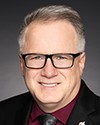Mr. Speaker, the following reflects a consolidated response approved on behalf of Global Affairs Canada ministers.
On April 25, the Minister of Foreign Affairs tabled in Parliament the agreement between the Government of Canada on the one hand and the Government of the Kingdom of Denmark together with the Government of Greenland on the other hand, on the maritime and land boundaries in the area between Greenland and Canada, done at Ottawa on June 14, 2022. Please see Sessional Paper No. 8532-441-33.
With regard to part (a), on June 14, 2022, Canada and the Kingdom of Denmark signed the agreement between the Government of Canada on the one hand and the Government of the Kingdom of Denmark together with the Government of Greenland on the other hand, on the maritime and land boundaries in the area between Greenland and Canada.
The agreement resolves all existing boundary disagreements with the Kingdom of Denmark, including the long-standing disagreement regarding the sovereignty of Hans Island, Tartupaluk, Canada’s last remaining Arctic territorial dispute.
In particular, the agreement results in solutions to four boundary issues with the Kingdom of Denmark.
The first is with regard to the Lincoln Sea. The agreed maritime boundary resolves an outstanding disagreement regarding how to draw the boundary line in Lincoln Sea, the body of water north of Ellesmere Island and Greenland. The boundary in Lincoln Sea extends to the 200 nautical mile limit from the coasts of Nunavut and Greenland. The maritime boundary in Lincoln Sea builds on the 1973 treaty that established a continental shelf dividing line extending from the top of Nares Strait in the north to the bottom of Davis Strait in the south. At the time, the 1973 treaty did not determine the boundary in Lincoln Sea due to a technical disagreement over how the boundary should be determined. With the agreement, those technical differences have now been resolved.
The second is with regard to the modernization of the 1973 boundary line. The agreement establishes a modernized single maritime boundary within 200 nautical miles, which runs from the 200 nautical mile limit in Lincoln Sea in the north to the bottom of Davis Strait in the south. The modernized maritime boundary between Canada and Greenland, at almost 3,000 kilometres in length, is the longest uninterrupted maritime boundary in the world.
The third is with regard to Hans Island, Tartupaluk. The agreement divides the island along a natural ravine on the island running generally in a north-south direction. This equitable division forms part of the larger package of agreements. By using a natural landmark, it makes the division of Hans Island easy to administer.
Continued access to and freedom of movement on the entire island will be maintained for Inuit in Nunavut and in Greenland, including for hunting, fishing and other related cultural, traditional, historic and future activities. A practical and workable mutually agreeable border implementation regime will be established by Canada and by the Kingdom of Denmark for all visitors.
The fourth is with regard to the Labrador Sea. Canada filed a submission to the Commission on the Limits of the Continental Shelf, CLSC, regarding the outer limits of the continental shelf beyond 200 nautical miles in the Labrador Sea in 2013. The Kingdom of Denmark, together with Greenland, filed its own submission to the CLCS for the same area in 2012.
The submissions revealed an overlapping area of continental shelf, which is a normal part of the scientific process under the UN Convention on the Law of the Sea, UNCLOS, to delineate the outer limits of the continental shelf. The agreement establishes a binding boundary line in the overlapping area, which represents an equitable solution, consistent with article 83 of UNCLOS. The agreement divides the overlap area approximately in half and confirms as Canadian continental shelf an area important to the province of Newfoundland and Labrador. This is among the first delimitations of the continental shelf beyond 200 nautical miles in areas of overlap between countries. By resolving the area of overlap now, and in advance of the United Nations Commission on the Limits of the Continental Shelf recommendations, it puts Canada and the Kingdom of Denmark in a position of leadership in this area. This is particularly important as we think towards the future and find solutions for large areas of continental shelf overlap in the Arctic.
With regard to part (b), regulatory changes in domestic law are needed in both Canada and the Kingdom of Denmark before either country will be in a position to notify the other that internal procedures necessary to allow for the ratification of the treaty have been completed. One of the key regulatory changes required is to the border/customs regime to enable continued Inuit movement on Hans Island, Tartupaluk, and to set out the rules for other visitors to the island. For example, to allow continued movement, exceptions to presentation, examination, reporting of goods and other regulatory requirements specific to the island are needed from both sides.
It is difficult to provide an exact timeline for the implementation into domestic law of the required changes, particularly as the Kingdom of Denmark is also required to make similar regulatory changes before it can ratify the agreement. It could take 12 to 24 months to complete this work, with likely entry into force of the agreement sometime in 2024 or 2025.













